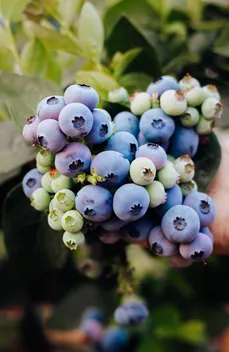2023 was a very challenging year for Peruvian blueberry producers, and their difficulties resulted in a considerable reduction of exports. However, this poor performance was not only linked to weather issues, but also to agronomic management.
Dr. Prometeo Sánchez García, a professor, specialist in plant nutrition, researcher and advisor to agro-exporting companies in Peru and Mexico, among other countries, explained that: "In 2023, El Niño brought high temperatures and rains; ideal conditions for the vegetative development of some blueberry varieties. This, combined with the daily use of nitrogen (75% ammonium and 25% nitrates) after pruning, exacerbated the problem of vegetative development, causing delays in the flowering and even the absence of flowers."
In the current 2024 campaign, the opposite seems to be happening. "This year, El Niño has brought high temperatures and no rain, causing severe stress to most varieties in Peru, leading to dehydration and even death of the apical meristem," he says.
 Genetics is crucial
Genetics is crucial
In this scenario, adaptability and a good choice of varieties play a fundamental role. Dr. Sánchez claims that "the genetic factor is crucial. It is very important to opt for varieties with greater tolerance to water stress, as the combination of unfavorable weather conditions, like high temperatures, low relative humidity and high radiation is causing the plants to suffer water stress." He also points to the importance of "creating stress maps to facilitate the design of stress management programs for different varieties through biostimulation and investment in infrastructure."
Which varieties to go for?
In addition to tolerance to water stress, Sánchez believes growers should opt for "varieties with a higher stomatal density in the leaves, which will better tolerate climatic stress." He considers Planasa varieties an excellent option. "In Peru and Mexico, under conditions of extreme climatic stress, the varieties which, in my experience, have shown the best performance have been the Blue Madeira, Blue Manila and Blue Maldiva."
These evergreen varieties don't require any chilling hours, which allows them to adapt to tropical climates with no cold and gives them a unique ability to resist unfavorable weather conditions and even thrive. "Producers still focus on aspects such as yield per plant, berry size, flavor (Brix/acidity ratio), firmness and bloom. This is also basically what the end consumer demands." He believes that "the future lies in the development of varieties with higher yields, better fruit quality and tolerance to climatic stress and phytopathogens."
 For more information:
For more information:
[email protected]
planasa.com/es/
